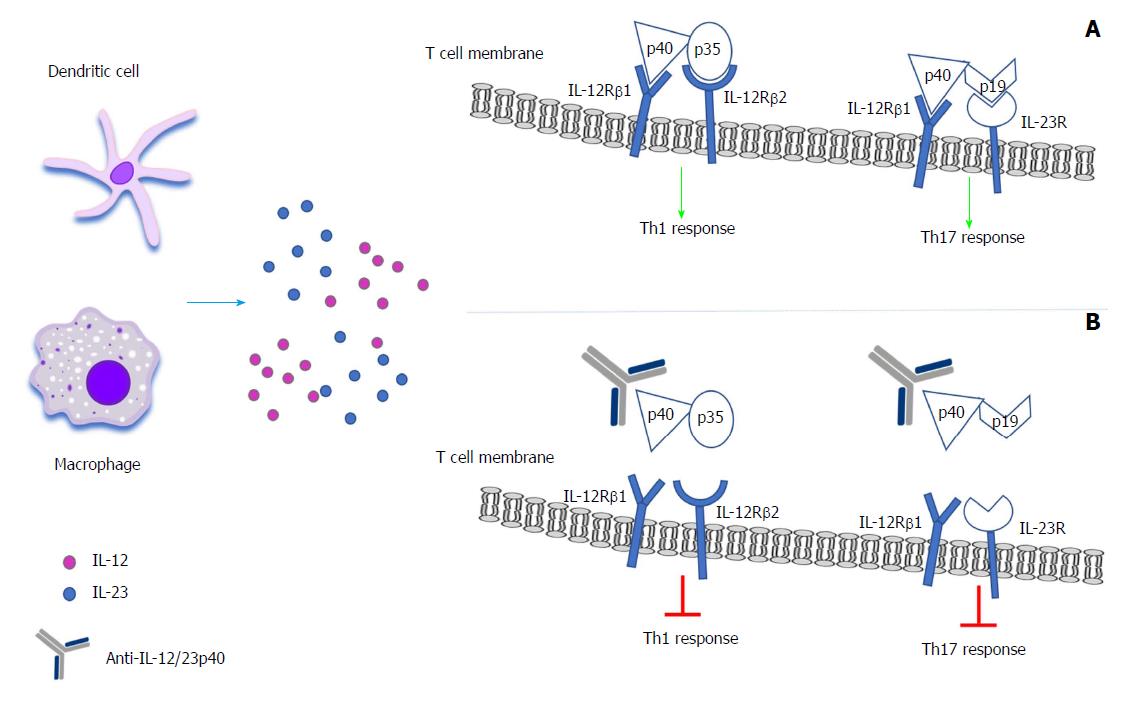Copyright
©The Author(s) 2018.
World J Gastroenterol. Sep 28, 2018; 24(36): 4093-4103
Published online Sep 28, 2018. doi: 10.3748/wjg.v24.i36.4093
Published online Sep 28, 2018. doi: 10.3748/wjg.v24.i36.4093
Figure 1 Neutralization of the interleukin-12/interleukin-23 pathways associated with T-cell activation and differentiation.
A: In inflamed tissue, bacterial stimulation can lead to the activation of dendritic cells and macrophages. This process results in the activation of T cells and the secretion of inflammatory cytokines such as IL-12 and IL-23. The binding of IL-12 in its receptor, which is composed of IL-12R-β1 and IL-12R-β2 results in the preferential T cell differentiation into Th1 cells, promoting the Th1 cell response and secreting cytokines such as IFN-γ and TNF. The binding of IL-23 in its receptor, which is composed of IL-12R-β1 and IL-23R results in the preferential induction of T cells into Th17 cells, inducing Th17 cell response and secreting cytokines such as IL-17 and IL-22; B: The use of a monoclonal antibody against the common subunit of IL-12 and IL-23 (IL-12/23p40) that selectively targets both IL-23 and IL-12 cytokines, disrupts their mediated signaling pathway and cytokine cascade, through the prevention of these cytokines’ interaction with their shared cell-surface receptor, IL-12R-β1. This process results in the inhibition of IL-12 and IL-23 signaling and further activation of Th1 and Th17 phenotypes. IL: Interleukin; IFN: Interferon; TNF: Tumor necrosis factor.
- Citation: Aggeletopoulou I, Assimakopoulos SF, Konstantakis C, Triantos C. Interleukin 12/interleukin 23 pathway: Biological basis and therapeutic effect in patients with Crohn's disease. World J Gastroenterol 2018; 24(36): 4093-4103
- URL: https://www.wjgnet.com/1007-9327/full/v24/i36/4093.htm
- DOI: https://dx.doi.org/10.3748/wjg.v24.i36.4093









